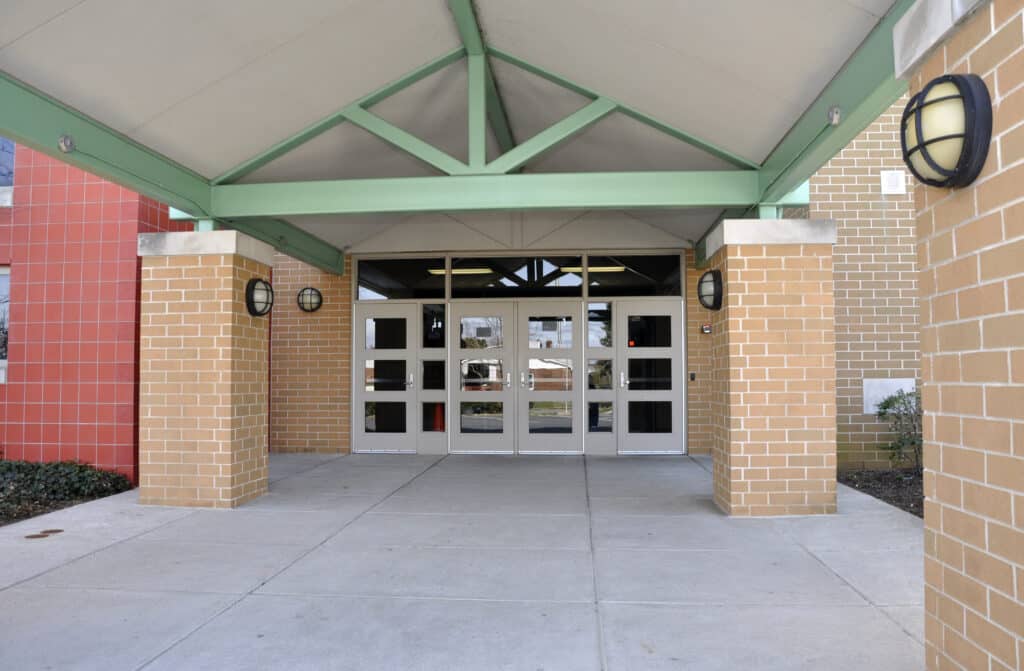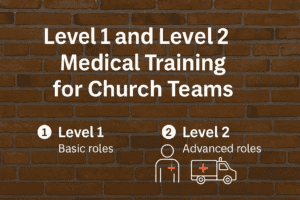In Texas, school safety has become a crucial aspect of maintaining a healthy learning environment for students and staff alike. To improve safety measures, Texas schools conduct safety audits that involve the key stakeholders – teachers, administration, parents, and students. These safety audits assess areas such as building security, emergency preparedness, and the overall safety culture at schools. Teachers play a vital role in these audits, ensuring that schools adhere to state-mandated safety and security requirements.
The Texas Education Agency, in partnership with the Texas School Safety Center, regularly reviews and updates safety requirements and information, ensuring that schools are equipped with the knowledge and resources to protect students and staff. Teachers are often on the frontlines of implementing and maintaining safety protocols in their classrooms and on school grounds, making their input crucial to the success of these audits.
In addition to their traditional responsibilities in creating a nurturing and engaging learning environment, teachers must now also stay informed and actively participate in safety audits to help develop and maintain a secure school environment. By being actively engaged in the safety audit process, teachers contribute to the overall strength of the school’s safety measures, providing peace of mind to the entire school community.
Role of Teachers in Texas School Safety Audits
Collaboration with Law Enforcement
In Texas, teachers play a crucial role in ensuring the safety and security of public schools. One of their key responsibilities is collaborating with law enforcement agencies (LEAs) and participating in Texas School Safety Center (TxSSC) initiatives. Teachers work closely with school districts, superintendents, and local law enforcement to develop and implement comprehensive security audits and emergency operations plans.
Under the Texas Education Code, school districts and campuses are mandated to conduct safety and security audits periodically. Teachers, in collaboration with LEAs and the Texas Education Agency (TEA), actively participate in these audits to assess and address potential risks and vulnerabilities in their schools.
Participation in Training
Another vital aspect of teachers’ roles in Texas school safety audits is participation in training. The TEA and TxSSC offer a wide range of training programs designed to help educators develop the skills and knowledge necessary for maintaining a safe and secure school environment. These training programs cover topics such as access control, emergency preparedness, and crisis management.
Furthermore, Texas public schools are required to conduct regular safety and security audits, with survey results submitted to the TxSSC. Teachers engage in these audits, offering valuable insights into their schools’ unique safety concerns and potential threats. The collaboration between educators and security professionals in carrying out these audits helps improve the overall effectiveness of emergency operations plans, ultimately enhancing the safety and well-being of all Texas public school students.
In summary, teachers play a vital role in Texas school safety audits, as they collaborate with law enforcement agencies and participate in relevant training programs. Their involvement ensures that public schools remain safe and secure environments for all students and staff, in line with the standards set by the Texas Education Code and the TEA.
Legislation and Guidelines for School Safety Audits
Texas Education Code and Texas Legislature
The Texas Education Code and the Texas Legislature work together to establish guidelines and requirements for school safety in the state. Under the Texas Education Code, §37.207, Local Educational Agencies (LEAs) are required to respond to a survey issued by the Texas School Safety Center (TxSSC) to certify that they have completed specific safety requirements by the end of each audit cycle. The Texas Legislature has also enacted laws relating to school safety, providing additional regulations and requirements for districts to follow.
Governor Abbott’s Directive
In 2018, Governor Greg Abbott issued a directive for school districts to take required steps for enhancing school safety, following the tragic shooting in Santa Fe, Texas. These required school safety action steps were designed to improve the safety and security of school facilities for staff, students, and visitors. Under Governor Abbott’s directive, districts like Uvalde have implemented changes to improve their safety audits, such as training for armed teachers.
In conclusion, both the Texas Education Code and Texas Legislature, along with Governor Abbott’s directive, play vital roles in shaping the guidelines and requirements for school safety audits in Texas. Local Educational Agencies (LEAs) are responsible for following these directives and ensuring that their schools maintain a safe and secure learning environment for all students, staff, and visitors.
Audit Implementation and Reporting
District Audit Reporting Tool
The District Audit Reporting Tool (DARtool) is a crucial platform for Texas schools to compile and manage safety and security audit data. Teachers, along with other school staff, participate in the implementation and reporting phase of the audit process. Their input contributes to the development of accurate safety and security audit reports, essential for compliance with Texas Education Code 37.108, which requires school districts to report audit results to the Texas School Safety Center (TxSSC).
Threat Assessment
A major aspect of Texas school safety audits is threat assessment. During this process, teachers work collaboratively with other school staff members and local first responders to evaluate any potential threats to campus safety and security and report them to the audit team.
Access Control Procedures
Access control procedures are fundamental to maintaining a safe and secure campus. Teachers play an integral role in enforcing these procedures, monitoring entry points, and reporting non-compliance issues. By participating in the development of access control policies, teachers help to safeguard their school campuses from unwanted intruders, thus ensuring the safety of students and staff.
Safety Training and Resources for Teachers
Texas School Safety Center Resources
The Texas School Safety Center (TxSSC) offers various resources for teachers to ensure they are equipped with the necessary skills and knowledge to keep schools safe. These resources include training, drilling, and exercising toolkits, as well as drill guidance for school documents. Teachers can access these resources to stay updated on the latest safety practices and standards in Texas schools.
Emergency Operations Plans
The Texas Education Agency (TEA) emphasizes the importance of multi-hazard emergency operations plans (EOPs) for schools. EOPs cover various aspects, from the basic plan to active threat annexes, which are crucial elements in ensuring school safety.
Teachers can contribute to the review and updating process by staying informed and engaged in their respective schools’ emergency operations planning.
Overall, the role of teachers in Texas school safety audits is essential, and by staying up-to-date on safety training and resources, they can create a safer environment for their students and fellow staff members.
Additional School Safety Measures

In addition to arming and training teachers, there are several other safety measures that Texas schools have implemented to create a secure environment for their students and staff. Some of these measures include weekly exterior door sweeps, safety audits, and collaboration with local law enforcement. This section will delve deeper into these measures and their significance in maintaining a safe school environment.
Weekly Exterior Door Sweeps
Weekly exterior door sweeps are an essential part of maintaining school safety in Texas. This involves school staff members regularly checking all exterior doors to ensure they are secure and in proper working condition. By performing these sweeps, staff can quickly identify any potential security issues or maintenance needs, such as broken locks or damaged doors, and address them before they become a risk to students and staff.
Safety Audits
Safety and security audits play a crucial role in evaluating a school’s preparedness and safety infrastructure. In Texas, schools are required to undergo these audits periodically to ensure they meet the school safety requirements set by the state. During a safety audit, external assessors evaluate the school’s safety policies, procedures, training, and equipment. The insights gained from these audits allow school administrators to identify areas for improvement and take necessary actions to enhance overall school safety.
Collaboration with Local Law Enforcement
Building strong relationships with local law enforcement agencies is another vital aspect of maintaining safety in Texas schools. Law enforcement officers can provide valuable support, training, and resources in establishing and maintaining a safe school environment. They can work closely with school administrators and staff to develop emergency response plans, offer guidance on addressing potential threats, and even participate in safety drills to ensure the school community is well-prepared for various emergency situations.
By implementing these additional school safety measures, Texas schools can create a secure environment that goes beyond armed teacher training, further ensuring the well-being and safety of students, staff, and visitors.
Impact of School Safety Initiatives
Reducing Youth Violence
School safety initiatives in Texas play a crucial role in reducing youth violence by offering a comprehensive approach that involves school employees, including teachers. Teachers are trained to recognize early warning signs of potential violence, intervene when necessary, and collaborate with other staff members to address the needs of at-risk students. By fostering a safe and supportive learning environment, teachers can help curb incidents of violence in schools and contribute to the overall well-being of students and the community.
Some initiatives, such as the Guardian Plan, focus on providing teachers with specialized training in active shooter situations. This program equips educators with the necessary skills to confront and deter threats in emergency situations.
School Safety Review
The Texas School Safety Center (TxSSC) plays a vital role in enhancing security in schools by conducting safety audits every three years. Through these audits, the TxSSC evaluates the safety and security measures in place within districts, identifies opportunities for improvement, and develops recommendations for addressing any identified gaps or areas for enhancement.
Teachers actively participate in these audits by providing insight into their experiences and perceptions of safety within their schools and classrooms. This comprehensive review helps schools identify potential risks and implement appropriate measures to deter youth violence and ensure a secure learning environment.
In conclusion, teachers play a multifaceted role in Texas school safety initiatives. They not only act as educators but also serve as frontline responders within their schools by participating in safety audits and receiving specialized training, when necessary. By working collaboratively with other school employees, teachers contribute significantly to reducing youth violence and ensuring the safety and security of Texas schools.
Conclusion
The role of teachers in Texas school safety audits extends beyond merely participating in drills and following safety protocols. With rising concerns about school shootings, educators need to maintain a clear understanding of their responsibilities and collaborate with external entities such as nonprofit and nonpartisan news organizations.
In Texas, the TXSSC serves as a comprehensive resource for information on safety audits, and it emphasizes the importance of accurate assessments during normal school operations. Through active involvement in these audits, teachers can contribute to creating a secure environment and preventing potential threats.
A collaborative approach to school safety can help make Texas schools safer and more secure environments for learning. By continuously adapting and evolving their practices based on the latest findings and recommendations, teachers can play an integral part in ensuring the safety and well-being of their students.
Frequently Asked Questions
What are the key responsibilities of teachers in Texas school safety audits?
Teachers play an essential role in the Texas school safety audit process, as they typically participate in the assessment of their individual classrooms and common areas through interviews or by providing other valuable information. They contribute valuable input on potential safety hazards and might be part of other initiatives. Additionally, they are responsible for ensuring that their classrooms are secure and well-prepared in case of emergencies.
How does teacher training impact the success of safety measures in schools?
Proper training equips teachers with the necessary knowledge and skills to identify potential safety risks and coordinate with other staff members in implementing safety initiatives. A well-trained teacher will be more adept at managing situations that require adherence to emergency procedures, ultimately contributing to a safer, more secure learning environment.
What are the best practices for teacher involvement in school safety?
Best practices for teacher involvement in school safety include active participation in coordinating safety efforts, attending safety training sessions, assessing risks within their classrooms, and collaborating with other school staff, students, and law enforcement agencies. By staying informed and proactive, teachers can contribute to a comprehensive safety plan that addresses potential threats and vulnerabilities.
What role do teachers play in emergency response planning?
Teachers are often directly responsible for the safety of their students during emergencies. Therefore, they must be involved in the development and implementation of emergency response plans. This includes understanding evacuation procedures, and lockdown protocols, and effectively communicating with students during emergencies.
What safety protocols are in place for situations involving armed teachers?
Though the focus of this FAQ is the broader role of teachers in school safety audits, it is essential to mention that Texas allows school districts to adopt policies that authorize specific staff members, including teachers, to carry firearms on campus. However, these policies often include strict requirements such as proper training, licensing, and background checks. Additionally, districts must collaborate with law enforcement to ensure that protocols are in place for responding to situations involving armed teachers.
Is your school as safe as it could be? Risk Strategy Group can help you find out. Our expert consultants are all certified by the Texas School Safety and Security Consultant Registry and are skilled in conducting comprehensive safety and security audits.
We can identify potential vulnerabilities, offer actionable recommendations, and help you implement robust security measures. Don’t wait for a crisis to reveal the gaps in your school’s safety plan. Contact Risk Strategy Group today and let’s ensure your school is a safe learning environment for everyone.








